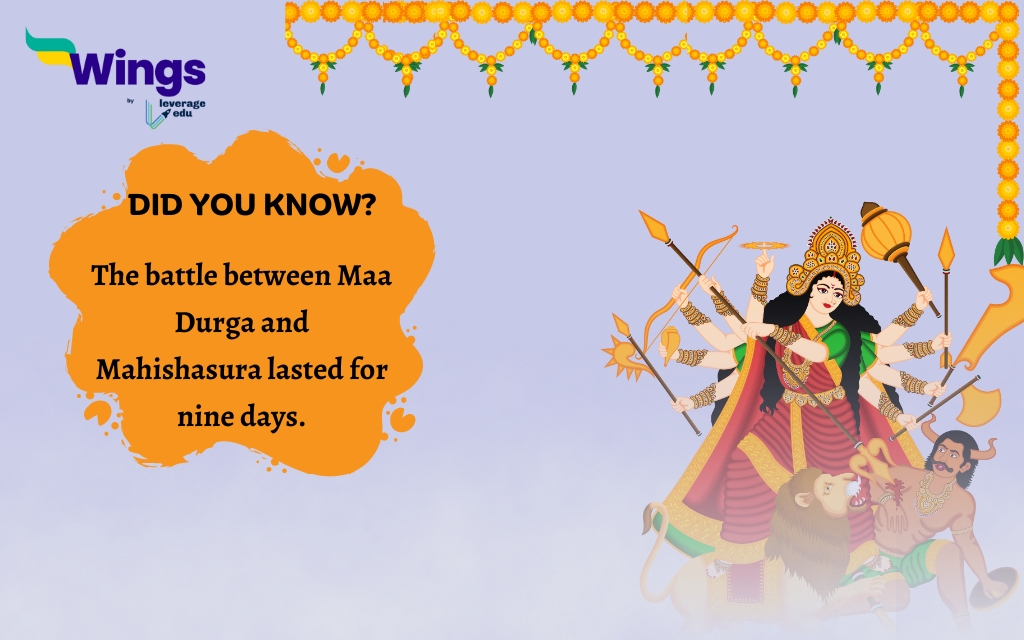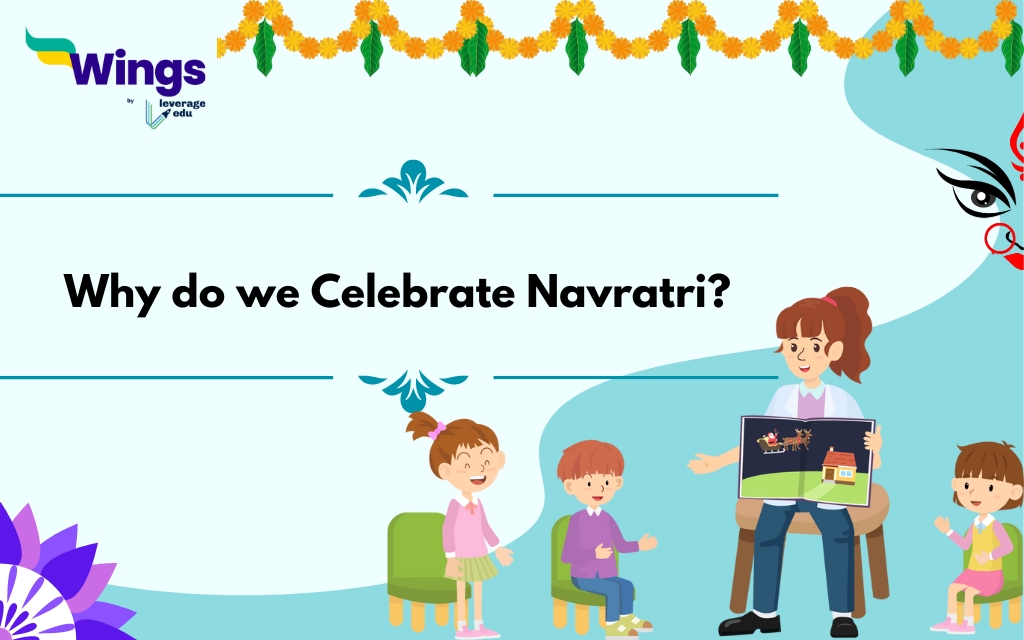When it comes to celebrating any festival in India, there is always a story attached to its origin, significance, and celebration. Be it Holi, Diwali, lohri, or Eid, India celebrates diverse festivals with great enthusiasm. One such interesting festival is Navratri, celebrated four times a year. The onset of the month of Chaitra, the Hindu lunar month, means that the occasion of Chaitra Navratri is around the corner. If you want to take this opportunity to teach your children why is Navratri celebrated for nine days, and what is the story of Navratri, here is a dedicated blog on why do we celebrate Navratri.
What is the Story of Navratri? 550
There was once a demon named Mahishasura. He possessed the unique ability to change into different forms which helped him fight battles against devas. However, the devas of heaven were able to chase Mahishasura and defeat all his attempts which enraged Mahishasura.
To take revenge and gain power, Mahishasura began meditating to invoke Lord Brahma, the supreme creator of this universe. Pleased with penance and efforts, Lord Brahma grant gave Mahishasura, the boon of immortality. This boon made Mahishasura undefeatable as no man- God or human could now kill him. He didn’t think that any woman would be strong enough to defeat him. Who knew his arrogance would eventually lead to his death?
Equipped with the greatest powers and courage, Mahishasura began his journey to conquer the underworld and the earth. Mahishasura, along with his army of demons, then move towards conquering heaven. Devas were in terror as Mahishasura wreaked havoc wherever he went.

Devas went to Lord Brahma to help them regain heaven. Lord Brahma, along with Lord Vishnu the preserver, and Lord Shiva, the destroyer together came up with a solution. The holy trinity created Goddess Durga, who symbolizes power, strength, and courage.
Mahishasura sent his most powerful demons Chanda and Munda who failed to defeat Goddess Durga. At last, he went on the battlefield and changed multiple forms such as buffalo, elephant, and lion. However, everything was useless. At last, Maa Durga struck a bow at Mahishasura when he was switching from his buffalo form. In this way, the story of Navratri concludes with Mahishasura being slain by Goddess Durga. From then Maa Durga started being known as Mahishasura Mardini.
Also Read: Five, Ten, and Twenty Lines on Navratri in English for Students
Why Navratri is Celebrated for 9 Days 940
In Chaitra Navratri, “Nav” means nine whereas “ratri” means days. In this way, Chaitra Navratri is a festival which lasts for nine days and concludes with Ram Navmi being celebrated on the ninth and final day. During this festival, people observe fasting, worship nine forms of Goddess Durga, wear colourful clothes, play Garba, and do a bunch of other related activities.
But have ever wondered why Navratri is celebrated for 9 days? According to Hindu mythology, it is believed that the battle between Goddess Durga and Mahishasura lasted for nine days. Therefore, celebrating this festival for nine days is a way to honour the goddess Durga.
Related Blogs
| Facts about Navratri | Paragraph on Navratri |
| 9 Days of Navratri Devi Names | 9 Days of Navratri Colors |
| Celebrating Navratri with Garba | Navratri Quotes and Wishes |
FAQ
In simple words, the story behind celebrating Navratri revolves around the battle between demon Mahishasura and Goddess Durga. In this battle, Goddess Durga and Mahishasura fought for nine days which eventually led to his death at the hands of the goddess.
Explaining the concept of Navratri to children can be a tricky game. However, you can make it interesting by incorporating moral values. You can explain the festival of Navratri as the victory of good over evil, right over wrong, and dharma over adharma.
The nine forms or goddesses of Navratri are Maa Shailputri, Maa Brahmacharini, Maa Chandraghanta, Maa Kushmanda, Maa Skandamata, Maa Katyayani, Maa Kalaratri, Maa Mahagauri and Maa Siddhidatri.
For more information about such informative articles, check the trending events page of Leverage Edu.
 One app for all your study abroad needs
One app for all your study abroad needs














